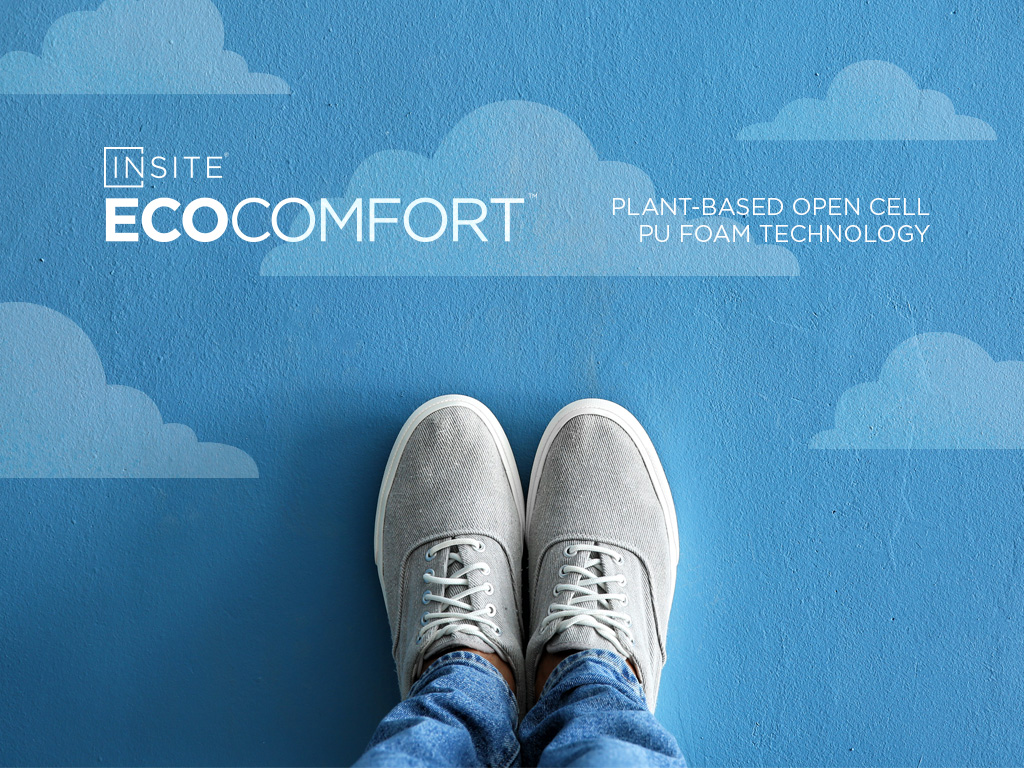The Anatomy of Footwear Cushioning
Many layers contribute to overall footwear comfort, and we’re taking apart a shoe to go inside each layer and how it helps with everything from cushioning to rebound.

When it comes to insoles, there’s no denying the market dominance of open cell PU foams. Open cell PU foam balances airy comfort with breathability. Its die-cut applications make it easy and affordable for developers to incorporate into their new and existing footwear lines.
Plenty of insole companies provide open cell PU foam. But only INSITE goes the extra mile when it comes to both ergonomic comfort and sustainable materials.
INSITE EcoComfort® open cell foams are made with up to 50% plant-based content — more than any other open cell foam on the market today. Not only does this plant-based content help to reduce your carbon footprint, but it also enhances the overall performance of the insoles. Our plant-based open cell foams show that you never have to compromise between sustainability, durability, and comfort.
As the name implies, open cell foam consists mostly of cells that aren’t completely encapsulated. Compared to its closed cell cousin, open cell foam allows more air to flow through the foam, making it more breathable and moisture-wicking. Open cell foam can be engineered for higher softness while still maintaining a strong compression set. It also offers simple insole solutions for footwear developers, with a variety of molded and die-cut possibilities.
INSITE EcoComfort open cell foams substitute one of the main ingredients in polyurethane with Susterra® bio-propanediol (bio-PDO). Susterra bio-PDO is made by fermenting glucose from industrial field corn. More than just a simple filler or additive, this bio-PDO is a fundamental part of the reaction that creates the foam. The result is a stronger blend of plant-based material that enhances the foam’s overall performance.
How does that compare to plant-based compounds in other foams? Many competitors turn to castor oil to reduce their carbon footprint. But unlike bio-PDO, castor oil is a filler that does not provide significant performance benefits. INSITE open cell foams are built using a more integral chemical process — with bio-PDO compounds that demonstrate even more comfortable physical properties.
At INSITE, our mission is ergonomic underfoot comfort, built on data and biomechanics research. That applies to more than just our patented shapes. It applies to our foam formulas as well.
During testing, our plant-based open cell foams outperformed traditional and castor-based foams in tensile strength, elongation, and tear strength. This is thanks to the longer hydrogen bonds in bio-PDO, giving the foam more rebound and flexibility. As a result, we can build our foams lighter and more durable, offering remarkable comfort that lasts the full life of the shoe.
Of course, the biggest reason for the bio-PDO insole revolution is the reduced impact on the environment. Based on a peer-reviewed life cycle assessment from 2019, our bio-PDO compounds were found to reduce CO2 emissions by 48%, and non-renewable energy use by 46%, compared to the petrochemical alternatives they replaced.
Adding INSITE plant-based open cell foam insoles to your footwear line can help you meet your sustainability metrics, while still providing lab-tested comfort benefits to your customers.
The great news is that INSITE has engineered plant-based open cell PU foams at a similar price point to the traditional PU foams you’re using today. Get in touch with INSITE and request samples of our plant-based open cell PU foams, and take your first steps towards greater sustainability.
Many layers contribute to overall footwear comfort, and we’re taking apart a shoe to go inside each layer and how it helps with everything from cushioning to rebound.
Discover the three INSITE foam insoles that each satisfy the specific needs brands have for every type of footwear design.
What’s the difference between bio-based foams and recycled foams, and how do each measure up as sustainable insole materials?